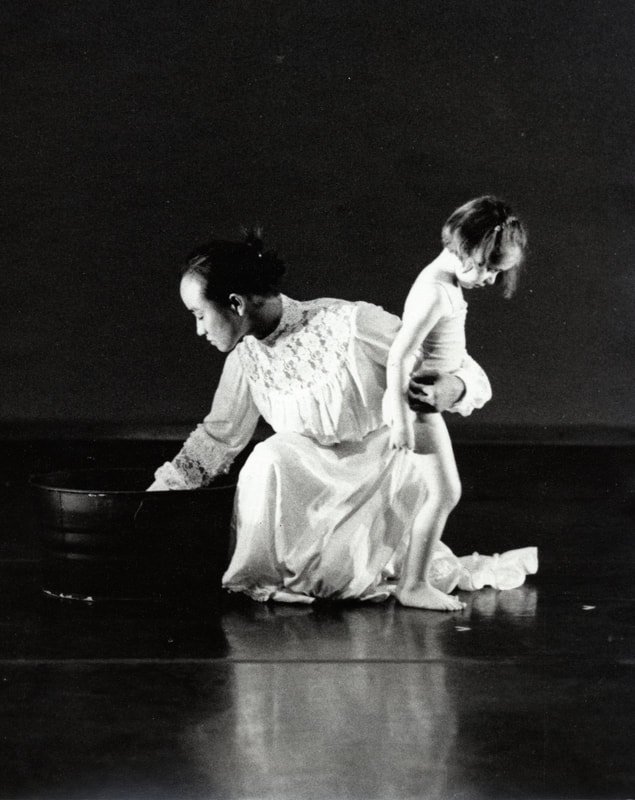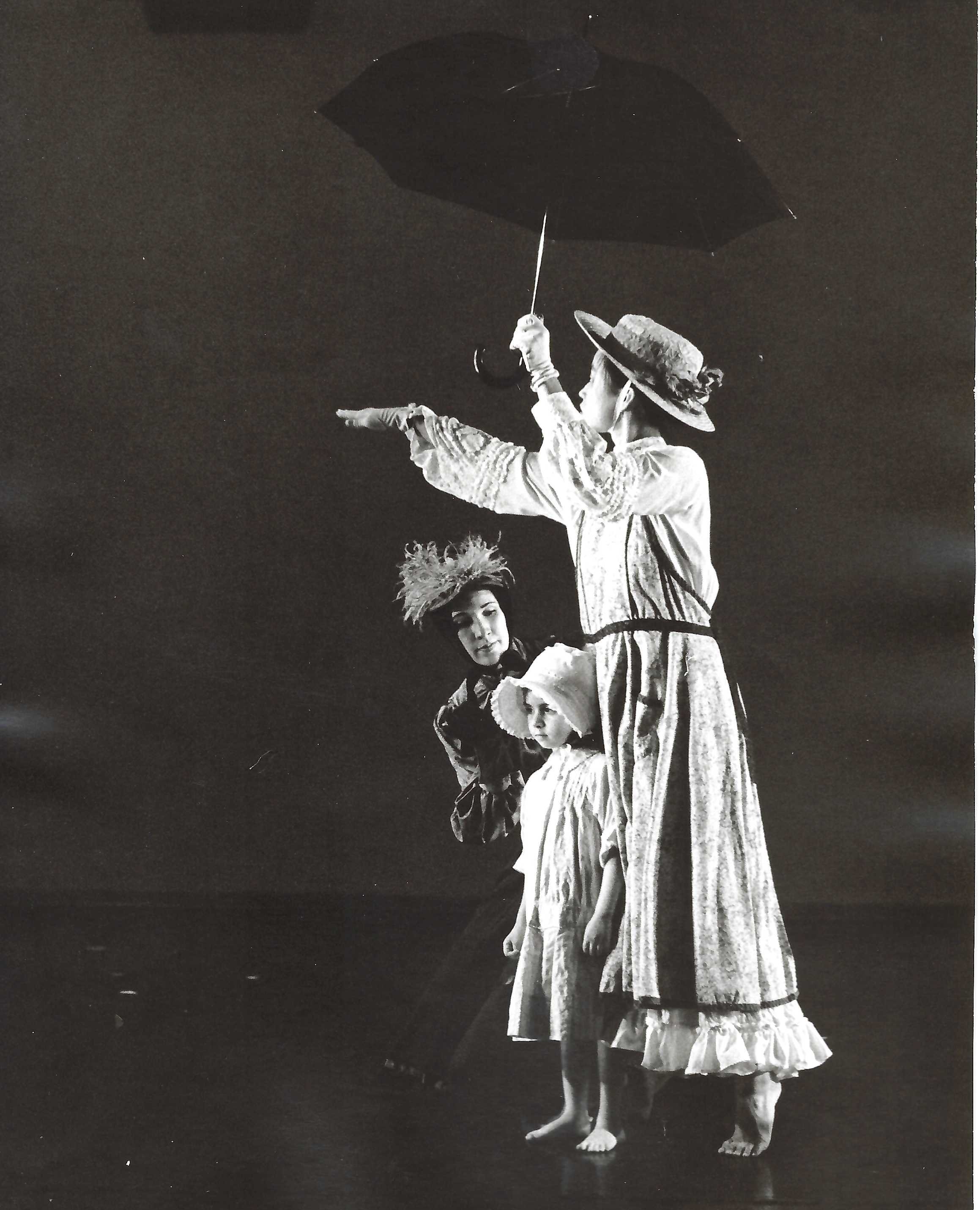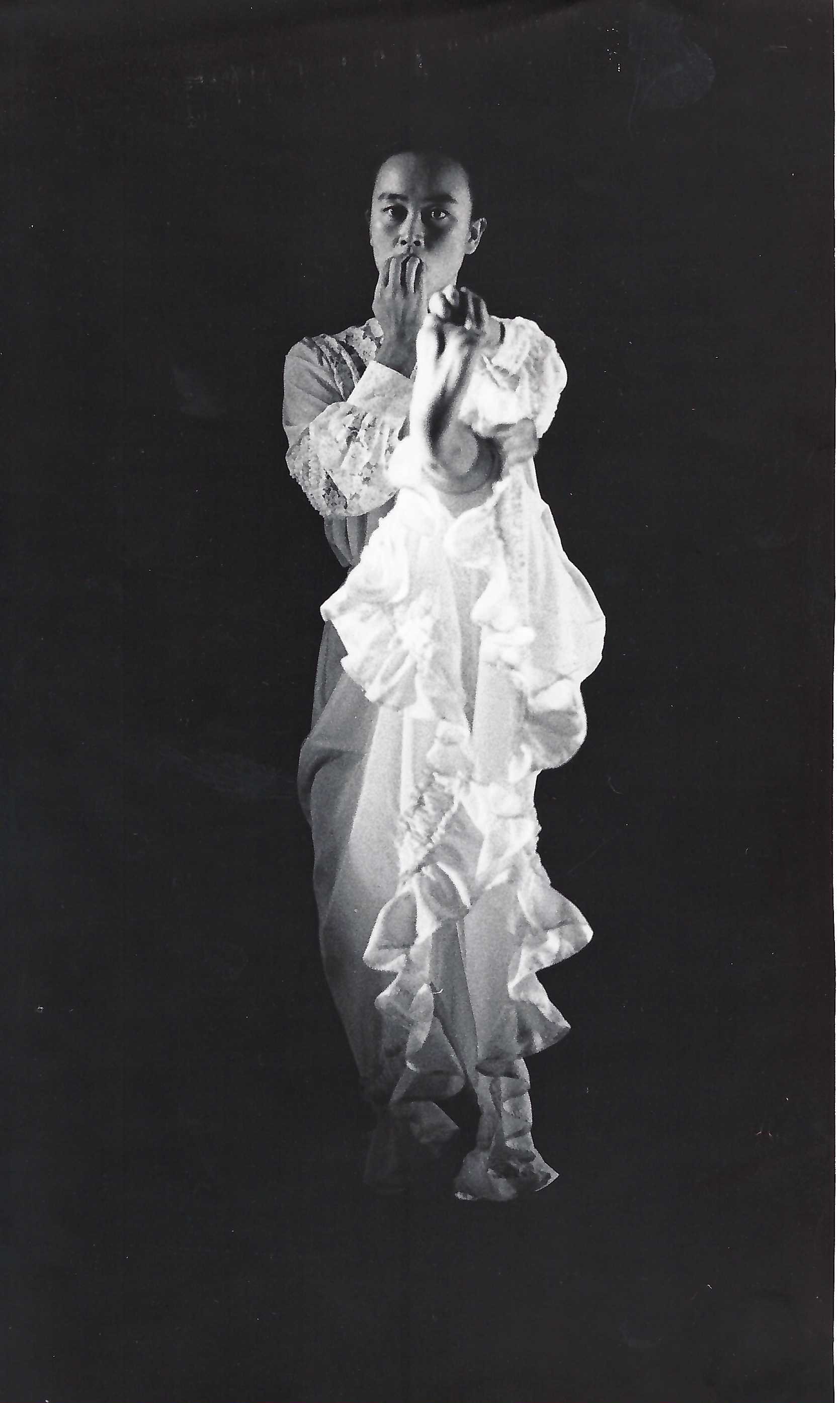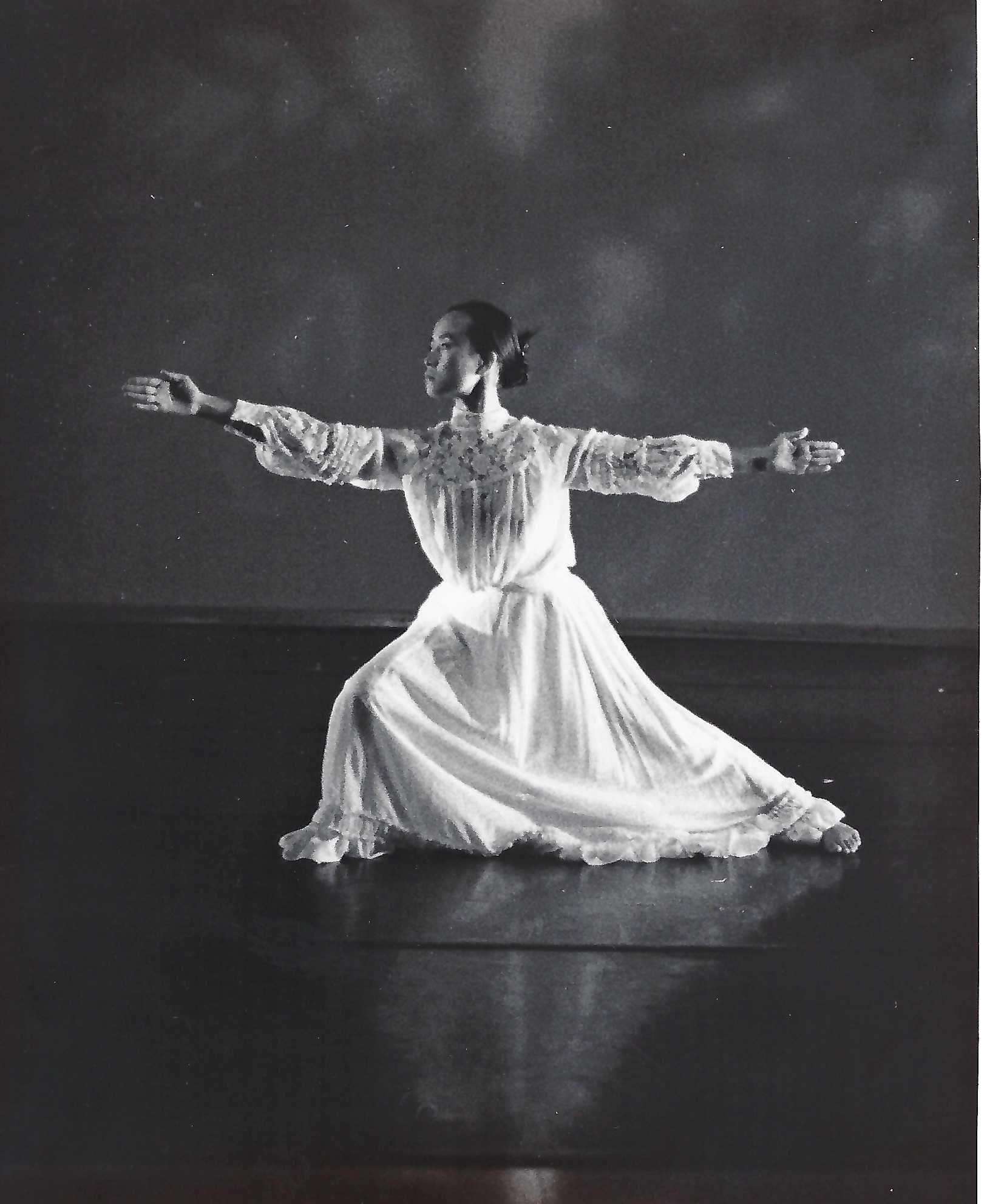Set of Eight: Routines and Reveries
Premiere: Premiered by Ann Arbor Dance Works, 9/27/2000, Betty Pease Studio Theater. Subsequently performed at UM Museum of Art 2/01; Toledo Museum of Art, Great Gallery, June 22, 2001; and in the UM Betty Pease Studio Theater 6/01. Funded in part by the Institute for Research on Women and Gender and by the UM Museum of Art. Subsequently restaged with added scenes for performances in Japan June 2007, as part of the production “In the Garden,” Euin-In Temple, Kyoto, Japan.
Lighting Design: Mary Cole
Costumes: Courtesy of UM Costume Shop, with special thanks to Rebecca Valentino and Angela Youells
Props: Courtesy of University of Michigan Prop Shop, with special thanks to Arthur Ridley
Dancers, in order of appearance: Tomoko Kurokawa, Anne Falardeau, Annabel Elizabeth Weiner, Nicole Palczynski
Musicians: Shakuhachi: Michael Gould; Soprano: Beverly Schneider; Piano: Christian Matjias
Scene titles, with music credits:
1. The Bath
traditional shakuhachi music
2. The Letter
traditional shakuhachi music
3. The Child's Bath
Liebst du um Schonheit by Clara Schumann
4.The Dressmaker
traditional shakuhachi music
5. The Bus. Honeysuckle, Op. 97, #5 (from Grandmother's Garden), by Amy Beach, with traditional shakuhachi music
6. The Visit
traditional shakuhachi music
7. The Lamp
Goodbye Sweet Day by Kate Vannah
Special thanks to Jonathon Moniaci for transposing "Goodbye Sweet Day"
8. Study
traditional shakuhachi music
Program Note:
At the conclusion of a letter she wrote to her friend and fellow painter Berthe Morisot, Mary Cassatt exclaimed, "P. S. You must see the Japanese. Come as soon as you can." She was referring to the exhibit of Japanese prints she had seen at the Ecole des beaux-arts in Paris. This exhibit provided the inspiration for Cassatt’s "set of ten" prints which were influenced particularly by the works of18th century Japanese master Kitagawa Utamaro,who depicted women engaged in the rituals of their daily lives. Showing private moments in the lives of Victorian women, Cassatt's suite of prints, created in 1890-91, echo some of the techniques and subjects of Utamaro. Judith A. Barter states that this color-print suite of Cassatt's "marks a watershed in her career, for, in the process of its creation, her fidelity to the description of physical reality became secondary to the evocation of mood and the suggestion of larger meanings."
Description: The link below, “Notes for the pre-performance talk” provides a description of the inspirations for this dance work. It was a special pleasure to feature Annabel in this work, and she stole the show. She was just entering kindergarten at the time. The lead dancer, Tomoko, had been her babysitter that year, and Beverly Schneider, the soprano, was living with us that year as her nanny. It was a wonderful cast to work with. Anne Falardeau, who played the maid, was an art and dance major, and was very tuned into the process. This was a wonderful opportunity to fuse my work and home life.
Notes for pre-performance talk University of Michigan Museum of Art 2/18/2001
The Michigan Daily review
Video of University of Michigan Museum of Art dress rehearsal 2001
Cassatt notes/Fogel answers to questions 2007 version
Cassatt/Utamaro comparison PowerPoint

Tomoko Kurokawa and Annabel Weiner: The Bath

Anne Falardaeu Annabel Weiner, Tomoko Kurokawa: The Bus

Tomoko Kurokawa: The Letter

Tomoko Kurokawa: The Letter